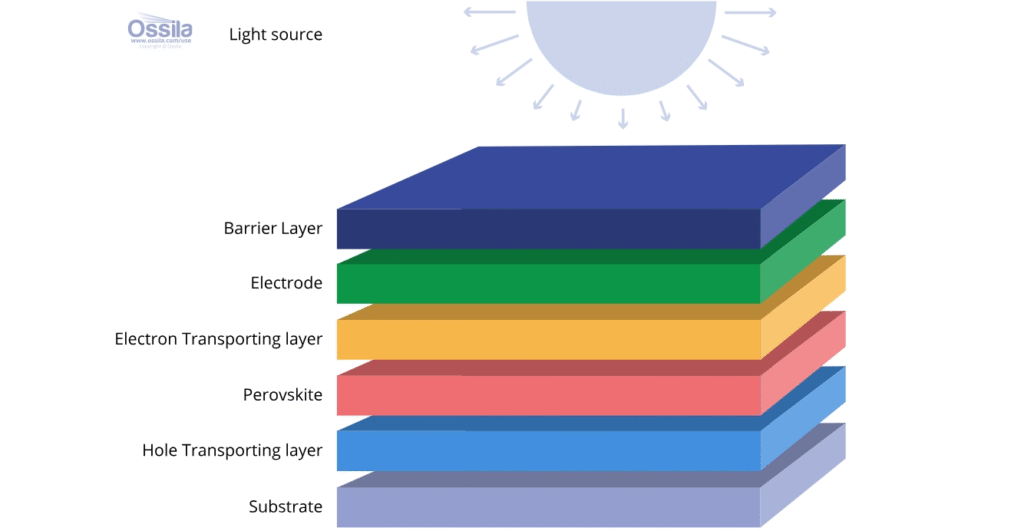The world agrees that solar energy is crucial in tackling climate change. The International Energy Agency reports that investments in solar now outpace all other power generation technologies combined. Part of this investment is focused on developing new solar technologies, like flexible solar cells.
Lightweight, durable, and self-powered, flexible solar panels are easier to integrate into a wide range of new applications and existing technologies. By simplifying solar energy adoption, flexible solar panels could make renewable energy more accessible than ever, driving its integration into everyday life and guaranteeing energy security.

What’s Wrong with Traditional Solar Panels?
Since 1954, crystalline silicon solar panels have become the industry standard, capturing 95% of the market thanks to their efficiency and reliability. Despite their success, silicon solar panels have a key limitation: they are rigid, heavy, and space-consuming. This is due to the material properties of silicon. While silicon can absorb light and convert it into electricity, fundamentally it is not the ideal solar material. Its material properties of cannot be altered, so the only solution is to use a relatively thick layer to maximise the amount of light absorbed.
As consumer devices become more portable and the demand for seamless energy integration increases, the limitations of silicon solar panels are more apparent. Flexible solar panels, using alternative solar materials, are now being explored, opening the door to better renewable energy integration.
What’s So Great About Flexible Solar Panels?
Flexible solar panels are more lightweight, less bulky, and—of course—flexible unlike traditional solar panels. They can be used in a wide range of applications that would be unsuitable for rigid silicon solar panels. Their smaller, flexible footprint makes them easier to transport and install as they impose significantly fewer structural demands on the surfaces they are mounted to.
Even in production, flexible, thin-film solar cells have an advantage. They can be manufactured using techniques where solar materials are printed or coated onto flexible substrates as a solution. These techniques are cheaper and lower energy to implement than the manufacturing process needed for silicon solar panels, and many can easily be scaled from research settings. Plus, there is much less material waste compared to silicon processing.
The Science Behind Them
Every component needs to be flexible, including the photovoltaic material (which converts sunlight into electrical energy). The photovoltaic material also needs to be stable, durable, and efficient at converting electricity when flexed or bent. Right now, there are several exciting photovoltaic materials that could meet these requirements.
Perovskites are materials with a distinctive crystal structure. When the right organic and inorganic materials are combined in this structure, it creates an efficient semiconductor. Since 2009, perovskite solar cells have rapidly improved, reaching 30.1% efficiency—comparable to silicon, which took nearly four decades to achieve similar results. Another benefit of perovskite solar cells is that they can absorb light more efficiently that silicon. Even in very thin layers, they can be highly absorbent, which makes them suitable for flexible solar panels. The potential for flexibility and impressive performance make perovskites a prime candidate for next-generation solar panels.

Each layer in a flexible solar cell must have flexible properties.
Another material category that could be used is organic photovoltaics. Made from polymers or small organic molecules, they offer high absorbance, flexibility, low toxicity, and low manufacturing costs. Easily coated or painted onto substrates without requiring high temperatures, organic photovoltaics are highly compatible flexible plastic substrates which cannot withstand very high temperatures. While the record efficiency of organic photovoltaics is not as high as perovskites, their environmental benefits and adaptability keep them in active development.
Alongside organic photovoltaics, dye-sensitised solar cells and quantum dot solar cells are being explored. Dye-sensitised solar cells have only achieved efficiencies of 13% while, so far, quantum dot solar cells have achieved comparable efficiencies to organic photovoltaics.
Are They a Reality Yet?
Flexible solar panels using a material called copper indium gallium selenide are already available commercially. However, they are more expensive and less efficient than traditional silicon or emerging perovskites solar cells, limiting their adoption in cost-sensitive markets.
New materials, such as perovskites and organic photovoltaics, have issues with stability and durability which must be addressed before they can be commercialised. Perovskites, which hold the most potential, are susceptible to degradation when exposed to moisture, heat, and light—all necessary factors for solar panels to do their job. Right now, their high efficiencies are achieved in the lab using controlled, inert environments. On top of this, flexible perovskite films need to be very stretchable, but achieving suitable levels of stretchability is complex—it requires compatible materials, and enhancing flexibility often compromises performance.
Comparison with traditional solar panels is an additional hurdle for any new photovoltaic material; they must be better than or equal to silicon. This makes tackling the challenges associated with each new material even more important so they can be placed as viable, trustworthy alternatives.
Academic and industrial researchers are working hard to find more stable silicon alternatives. Current aims include finding perovskites with better intrinsic stability, improving encapsulation techniques which protect the solar cells from environmental factors, and trialling additives that improve material stability.

Perovskite solar cell efficiencies have quickly improved. Data from the National Renewable Energy Laboratory.
Where Can This Have the Biggest Impact?
With traditional solar panels already so popular, flexible solar panels can shine in more specific and high-demand applications. For example, they can fit the curved surfaces of wearable electronics such as sleeves and wristbands. For compact, full-integrated electronic systems, flexible photovoltaics could even be printed directly onto fabrics.
Flexible solar panels can also be better integrated into building and vehicle solar systems as part of their fundamental design or via retrofitting. This can make renewable energy systems more attractive to building and product designers by contributing to the overall aesthetic design, rather than detracting from it.
All of these applications contribute to a future where solar power is more readily available, but most notably, flexible solar panels can play an important role in tackling energy poverty. A major contributor to energy poverty is the challenge of connecting rural and remote communities to the main power grid. Extending grid infrastructure to these areas is often impractical or too costly to implement. Adaptable, innovative energy solutions, like affordable and flexible solar panels, could allow the setup of local, off-grid systems. With flexible solar panels, small solar systems can be deployed quickly in areas where transporting and installing large, rigid panels is not an option. Plus, flexible solar panels can more easily be integrated into portable emergency equipment for areas with unreliable or fragile grid systems.
The impact of solar technology on rural communities is transformative because reliable access to electricity can serve as a catalyst for economic, educational, and health advancements that were previously out of reach. Research published in Energy Policy reported, in countries like Kenya, Ethiopia, and Rwanda, off-grid solar systems are leading the charge against rural energy poverty, accelerating social and economic progress in these communities. Expanding these systems with flexible solar technologies could dramatically extend their reach, offering clean and reliable energy to communities that need it the most.
As flexible solar panels become more efficient and cost-effective, we will begin to see solar systems seamlessly embedded into everyday surfaces. Maximising solar coverage will reduce our reliance on fossil fuels and accelerate global decarbonisation. By removing the physical limitations of traditional solar panels, flexible technologies will make renewable energy more accessible, more adaptable, and more impactful.
Imogen Pass is a Scientific Content Collaborator at Ossila Ltd, which was founded in 2009, by scientists from the University of Sheffield.
















Leave a Reply